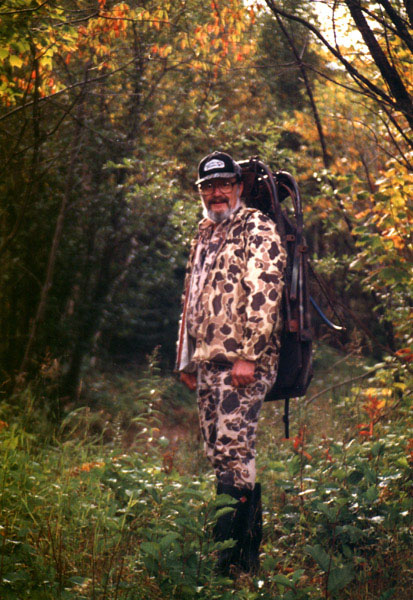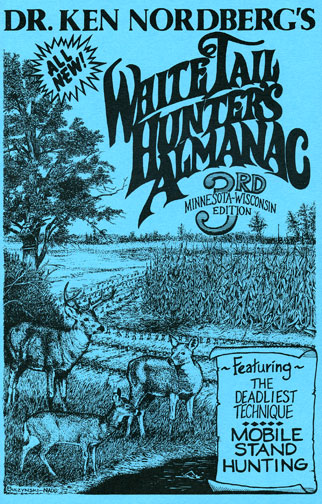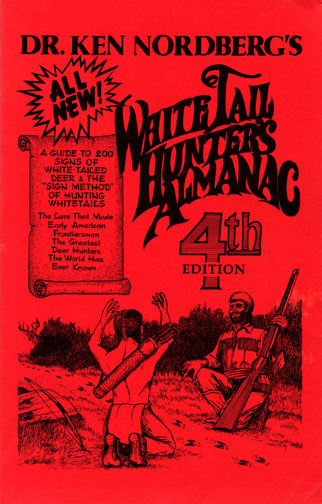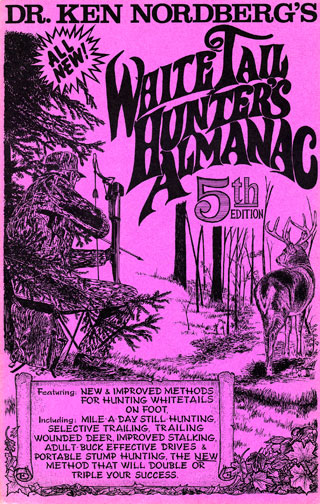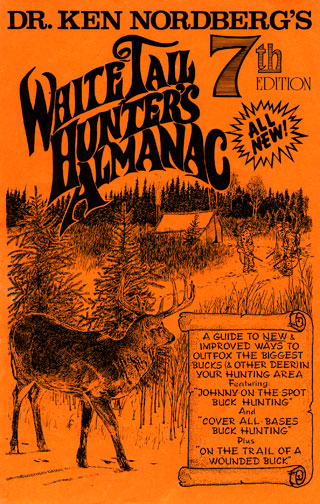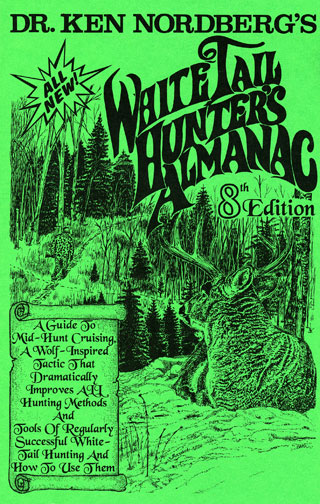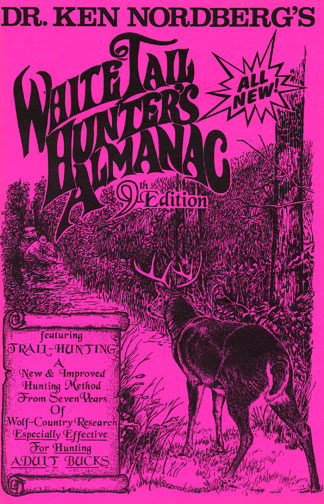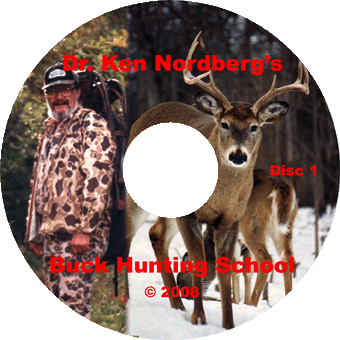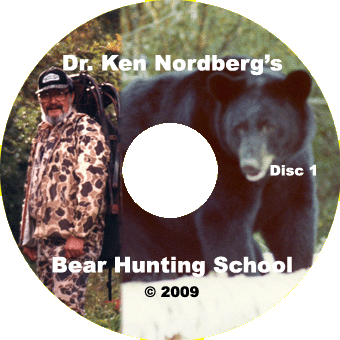Hunting Whitetail Feeding Areas
By Dr. Ken Nordberg
[The following is the another of many older articles that will appear on my website. This is article was first published in Midwest Outdoors in February of 2011. Please share what you learn from these articles with your whitetail hunting friends.]
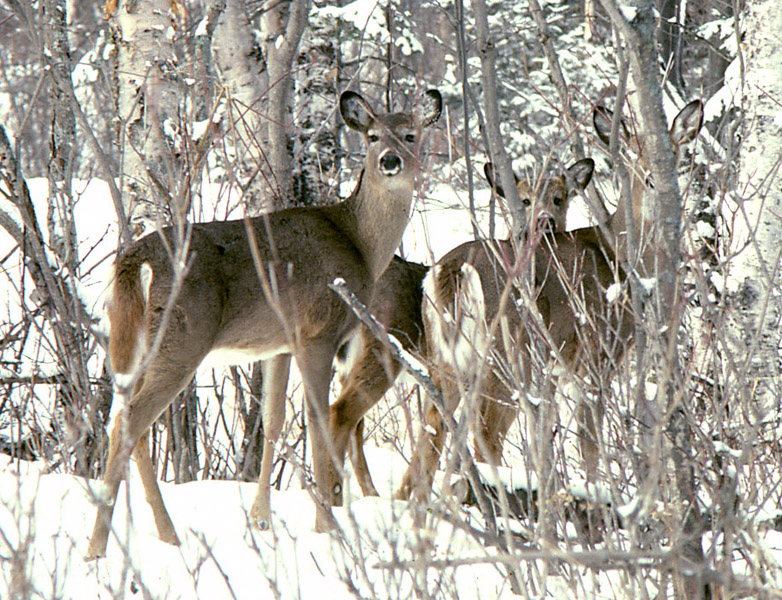
Though unlikely to be seen more than 50 yards away, whitetails in forest feeding areas often appear unexpectedly at very short range.
During all the years I taught others (primarily veteran deer hunters) how to hunt older bucks at my hunting schools in the wilds of northern Minnesota — with the exception of clearcuts — very few of my students were able to recognize a forest area whitetail feeding area. Whenever I led them into a favorite (much used) feeding area without previously telling them I was going to do this, none realized they were standing in one. Yet most deer hunters are aware of the fact that areas where whitetails feed during legal shooting areas hours are among the most productive places to hunt whitetails. This is probably why the most obvious of forest feeding areas, new clearcuts, attract so many hunters, including those with little or no hunting experience. Unfortunately, most who hunt clearcuts are unaware of precautions that should be taken when hunting any whitetail feed area. Not taking the proper precautions is the primary reason few hunters are successful at hunting deer in such areas. Most begin as if they are planning to hunt ducks or geese there, only becoming concerned about concealing themselves after crossing the area where they plan to watch.
Feeding areas are one of four whitetail home range elements where you will find an extraordinary number of off-trail deer tracks and droppings. In snow the numerous hoof prints will be close together, the deer obviously in no hurry. The tracks will zigzag, the deer seeming to have been wandering around aimlessly.
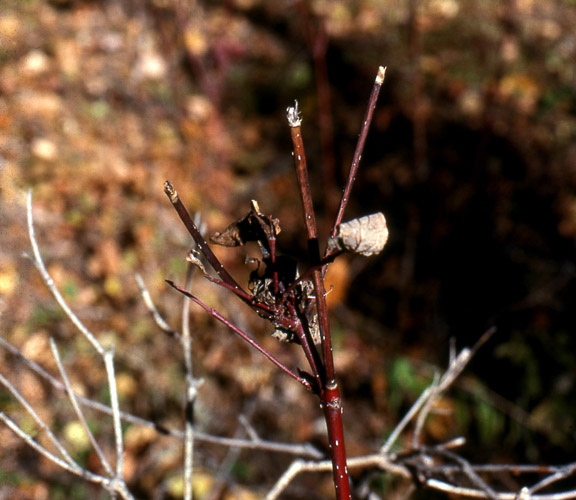
Red Osiers. Also known as Dogwood. Notice the tips with the grey to black color. They are not fresh. They have been eaten by whitetails during the prior winter. Notice the base, where the top few inches of branches are growing from. That base was eaten by whitetails during the winter two years prior. Each time whitetails nipple the tips off the stems of this plant, the following growing season a new burst of branches expands from that point.
During November deer hunting seasons, our forest region whitetails feed primarily on browse, stems of woody shrubs and young trees, especially stems that are red (red osiers and sugar maple saplings) and light tan (mountain maples) in my hunting area. Whitetails won't be feeding on browse when hunters scout in October, but wherever you find a lot of red-barked stems of woody shrubs and young trees and wherever these plants have a lot of stems with blackened tips (stems nipped off during the previous winter), you can bet whitetails feeding there in November. Look for red stems along forest edges, in wet lowlands where the sun reaches the ground and in deep grasses. After whitetails switch from green vegetation to browse in early November, look for freshly nipped, white, ragged tips on those low growing plants and saplings.
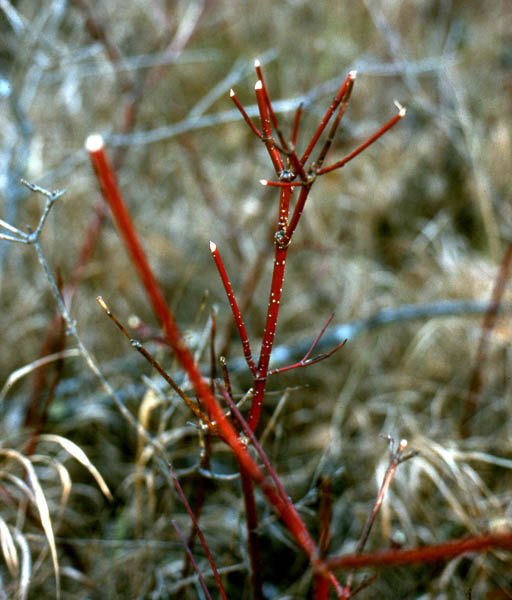
Red Osiers. Notice the tips with the white color. These tips are fresh. They have been eaten by whitetails in recent days. If there was snow on the ground, you would see the zigzagging tracks of the feeding deer. Again, lower down, notice how this plant's stems have branched out because of prior year's whitetail browsing.
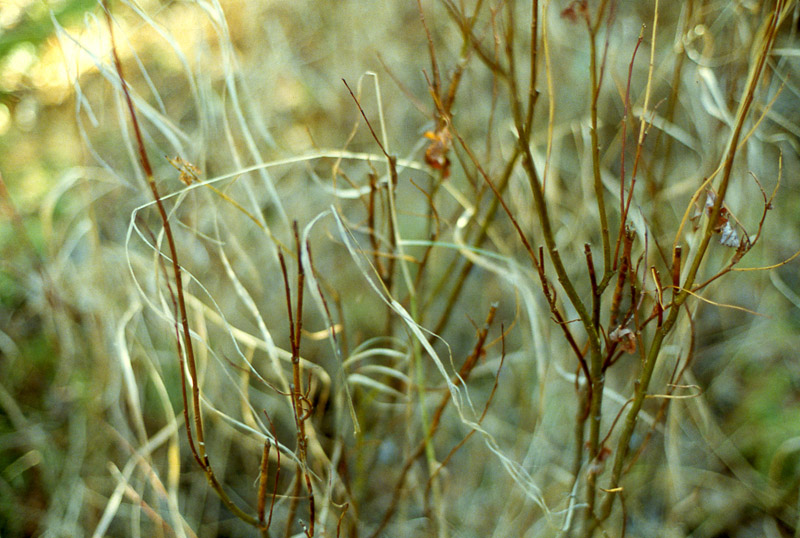
Not all browse plants will be Red Osiers. While scouting, always look for the plants that deer use for browse in your area. They might be Red Osiers, Sugar Maples, Mountain Maples, or some other plant. During the breeding phase of the rut, in our Minnesota hunting area, the does are always feeding in their favorite winter browse feeding areas. It would be a mistake to be hunting their grass feeding areas — areas they were using just 2–3 weeks earlier. (That is when we do our final fall scouting.)
Once you have found a feeding area (while scouting), the next step is to prepare to hunt it. Keep in mind your odds of taking a deer there will be greatly improved if you can somehow reach your stand site without the deer that normally feed there knowing it. Never count on deer being elsewhere when you approach a feeding area. In the morning they'll begin feeding there about the time your alarm clock rings. After feeding, especially if the feeding area is a clearcut, they'll likely bed where they can monitor the area via sight, sound and/or airborne odors.
Never believe you can approach a clearcut from upwind without deer identifying you via airborne odors. A downwind (or crosswind) approach is recommended in the morning because deer will already be there. Crosswind is recommended in the afternoon because experienced adult deer will approach the feeding area from downwind after you have arrived. Moreover, if you are in a treestand, downwind deer will readily spot your dark silhouette against the open sky over the feeding area.
Where I hunt whitetails, because the most common wind direction on opening weekend is southeast to southwest, I select stand sites and approach trails north of where I expect to see my selected quarries. Because the next most common wind direction is southwest to northwest, I also select stand sites and approach trails east of where I expect to see deer. I thus select two or more stand sites near almost every feeding area I plan to hunt.
Though you may prefer sitting on an elevated platform while hunting whitetails, the stand sites you select would provide the very same advantages my ground level stand sites provide. The first thing I look for is a spot within easy shooting distance downwind or crosswind of a trail or site that is or will be often visited by a certain big buck, revealed by lots of fresh and old, adult-buck-sized tracks, droppings and/or other signs. To prevent ruinous sky-lighting or snow-lighting, making my human silhouette obvious to experienced adult deer, I look for stand sites with a fairly solid, natural background and with some natural cover in front to hide movements I must make when preparing to fire at a quarry. If adequate cover cannot be found where I prefer to sit on my backpacked stool, I will create a chin-high blind using dead branches lying on the ground in the surrounding area, typically building it next to or behind a natural feature such as a large boulder or some small evergreens so it isn't an obvious, eye-catching change in the landscape. This should be done two to three weeks or more before opening day.
My next chore is to locate an acceptable approach trail. Sometimes I do this before actually selecting a stand site — it being important to select a trail that provides adequate concealment all the way to the stand. Generally, it is nearly impossible to completely conceal your motions when erect and walking to a stand site. However, if your footsteps are soft, if you are downwind or crosswind and if nearby deer cannot easily see you, they are unlikely to become alarmed enough to abandon the area. They'll be curious for awhile, but a half-hour or so after you reach your stand and become completely silent and motionless they'll no longer be concerned about what they saw or heard earlier. My approach trails are deer trails — cleared of dead branches where necessary to enhance silent footing — preferably coursing through dense cover and angling toward my stand site so dense cover is always between me and the spot where I expect to see deer.
If the feeding area is fairly open, I never cross it to reach a stand site. Instead, sticking to dense forest cover, I detour around it, taking care to avoid passing within 200 yards upwind of the area. Every year, this precaution necessitates some new trail work, but my hunting partners and I never hesitate to such work because it so often pays off.
There is an exception to never crossing a feeding area. During our hunting season four years ago I discovered a narrow valley full of dead, chest tall grasses and red osiers that were obviously being regularly eaten by a big buck (revealed by lots of fresh and old big-buck-sized tracks and droppings). With hunting time running out, I decided to go ahead with a hunting plan I would not ordinarily attempt. On this particular morning the wind was from the north. Having no knowledge of a way to approach this valley from downwind or crosswind, I decided to cross it from upwind, using a much trampled deer trail near the lower end of the valley that would provide great concealment until I reached a stand of young pines on the south slope. After placing my stool on the ground behind one of those pines, I then turned around to watch my back trail through the valley. Thinking if I made it across the valley before the buck was near — though I might not see the buck until it stepped onto my trail, a natural shooting lane — my fresh trail scent would likely make it halt to sniff the ground, giving me an easy shot. It worked. At 10:115 one of the heaviest bucks I have ever taken, a 315-pound (live) ten-pointer, stepped onto my trail and stopped. A neck shot dropped it in its tracks.
Forest area feeding areas are typically full of deer-tall cover. When hunting in such an area, deer often pop unexpectedly into view 10–50 yards away. As well as you may be hidden, any sudden movement or sound you make while getting your rifle into position to fire is almost certain to be spotted or heard by the deer; and there you'll be, the two of you staring at one another. If you are wearing a camo head net or mask (camo-black-orange cap on top), if you are wearing camo gloves and if your movements are slow and silent, that deer will just likely stand there a while, obviously curious, perhaps wondering if it is merely staring at a grouse. Do it right and you'll have adequate time to take a well-placed, quickly fatal shot.
Also keep in mind, experienced adult deer that feed in any feeding area you hunt will likely discover you and/or your stand site within 1/2 to two days, with or without your knowledge. You don't even have to be there for this to happen. Your fresh odors will be all that the big buck needs to figure out what you were doing there and it will begin avoiding the site. For this reason my hunting partners and I rarely hunt at one stand site more than 1/2 to one full day per week. [For more information on this topic, we recommend reading the article, “Unpredictability — The Final Key To Hunting Success”.] Because we are merely sitting, totally non-agressive, when a deer discovers us, with or without our knowledge, it will not abandon its home range. It maintains predictable habits during predictable hours elsewhere within its home range. Because we move to new stand sites once or twice daily, once or twice daily bucks must then find us all over again to avoid us. Unless one is very lucky or becomes completely nocturnal, and some do, no buck can routinely avoid us.
Good Luck Hunting,
Doc
